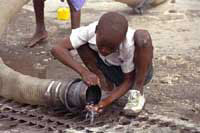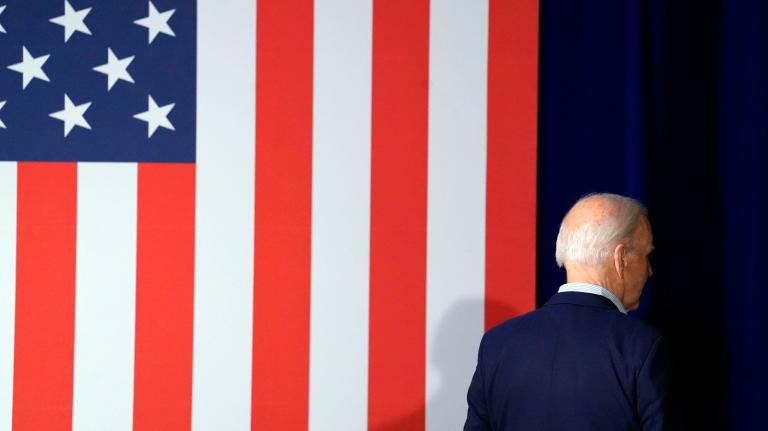Linda Harrar is an independent filmmaker, based in Boston but usually traveling the world producing documentaries for NOVA and other PBS programs. Through the lens of the camera, she sees a lot. In the editing room she sees it over and over. It sinks in deep.
So she had a strong reaction to the CBS “reality TV” series Survivor.

A “survivor” in Haiti.
Photo: U.N. Photos.
“I have searing memories of true struggles to survive,” she wrote on the web last week. “In Mexico City we filmed people living in cardboard houses in a dump, recycling the garbage they slept on. In Brazilian favelas we met women who had borne 20 children because they had no access to contraceptives. Elderly grandparents in Kenya have stepped in to raise AIDS orphans. In Haiti we filmed children with swollen bellies and orange hair, telltale signs of malnutrition.
“I try to include hope in my programs and people who struggle against the odds and do succeed. They are legion.”
And, of course, these true survivors bear no resemblance to the 16 folks who volunteered to go to a CBS-chosen island, where they were on camera day and night living on fish and rats plus plentiful rice and clean water supplied by the network. And probably a medical team just off-camera if someone became ill. And a million-dollar prize for the person left on the island after a series of silly games and unpopularity contests eliminated all other contenders. And they call this “reality TV!”
Linda Harrar points out, “Reality for half the world’s population is surviving on less than $2 a day. A billion people lack clean drinking water. On Indonesian islands near where Survivor was filmed, people eat rats regularly — because they have to.
“Around the world, a quarter of a million children die each week of malnutrition and preventable diseases. It doesn’t cost much to take the first step in protecting a child’s life — $17 in vaccinations.” Because she often hires helicopters herself, Linda knows that it must have cost about $500 to send the Survivor helicopter to drop off a slice of pizza to the winner of one of the contrived games on the show. That would be enough for vaccinations for 29 kids.
Of course it’s a pittance compared to the total cost of making that show, not to mention the million dollar prize at the end.
A million dollars. Vaccinations for 59,000 children.
Was it the million dollars that made people watch? Was it the suspense of not knowing how the story would come out? Was it a sort of atavistic enjoyment, watching other folks get low-down and grubby?
Are the networks correct in their assessment that we would never watch a real cliff-hanger about the life challenges of truly endangered people? Or are they wrong but unwilling to find that out, because watching actual reality TV wouldn’t put us in the right mood for shampoo ads?
Is it true that, as T. S. Eliot once said, “Humankind cannot bear much reality.”
Or is that quote just easy modern cynicism of the sort that unfortunately imbues our TV networks? What if we used the miraculous possibilities of television to be in touch with our real world, to get to know each other? My guess is that it would waken our minds to problems and possibilities, instead of dulling us with plastic-fantastic dilemmas dreamed up by producers in L.A. and New York who operate daily under the assumption that we are manipulable idiots.
I don’t think we are. I don’t think we could watch the real lives of real people very long without insisting on some simple changes in the world. Such as fewer silly game prizes and more vaccinations. Linda Harrar quotes James Grant, the former director of UNICEF, who once asked a young Ethiopian girl, “What do you want to be when you grow up?” Her reply: “Alive!”
Says Linda, “That’s what I call a real Survivor.“

